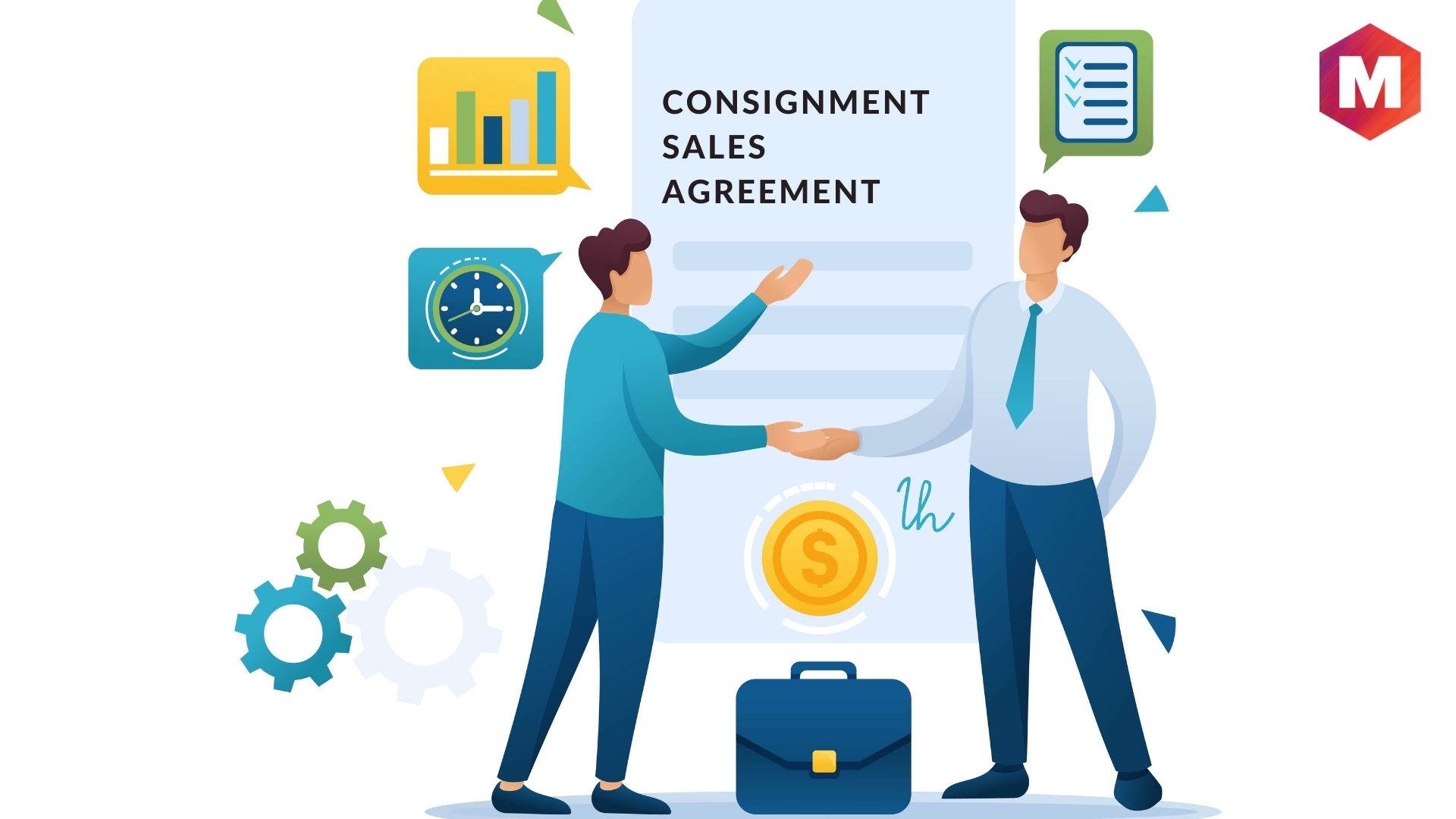A consignment sale is a business transaction in which one person (the consignor) gives objects to another person (the consignee) for selling purposes. The consignee, on the other hand, has the right to return unsold items back to the consignor.
To put it another way, a third party is entrusted with selling products on behalf of the owner in a consignment sale. Goods on consignment are also known as consignment sales.
Table of Contents
What are Consignment Sales?
Consignment Sales involve the selling of goods on behalf of a consignor. The consignee is the party that sells the product and is also responsible for returning unsold items back to the consignor. It’s important to note that the Consignment Sale arrangement benefits both the Consignor and Consignee.
They usually take place in retail settings such as clothing stores, antique shops, and art galleries. However, one can find the, in other industries as well including construction equipment, automobiles, and real estate. Under a consignment sale arrangement, the Consignor is selling products to the Consignee. The Consignor has given the title of the goods to the Consignee, but the Consignee does not own the goods outright until they are sold.
For example, a consignment sale is a great way to save money on baby clothes and toys. You can often find items for a fraction of the retail price. These sales are also a great way to make some extra cash. Maternity clothes are typically only worn for a few months, so such types of sales are a great way to get rid of them. Baby clothes and toys can be expensive, so these sales are a great way to save money. Opting for these sales method are also a great way to get rid of unwanted items.
Why Consignment Sale is popular?
There are several reasons Consignment Sales are popular
- For the Consignor, a Consignment Sale provides a way to sell items without having to worry about storing the goods or selling them.
- Consignment Sale also allows the Consignor to set their own prices for the goods.
- For the Consignee, a Consignment Sale provides a way to sell items without having to invest any money upfront.
- The Consignee only pays the Consignor after the item is sold. Consignment Sale arrangements are also flexible. The Consignee can return unsold items back to the Consignor at any time.
How does Consignment Sale work?
They usually involve a contract between the Consignor and Consignee. The contract will outline the terms of the sale, including the price of the goods, payment terms, and return policy. It’s important to have a written contract to protect both the Consignor and Consignee. The contract should be clear and concise to avoid any confusion or misunderstanding.
Consignment Sale Agreement
A Consignment Sale Agreement is a contract between the Consignor and Consignee that sets out the terms of their consignment relationship. This includes specifying what items are being sent on consignment, how long the Consignee can hold them for, what conditions they must be returned in, and other important details.
The agreement should also state whether the Consignor or Consignee will be responsible for paying any costs associated with selling the goods, such as shipping or advertising. Consignment Sale Agreement templates are available online and can be easily customized to fit the Consignor’s and Consignee’s needs.
How to Choose the Right Consignment Sale Agreement?
When choosing, it’s important to pick one that is tailored to the Consignor’s and Consignee’s specific needs. For example, some Consignment Sale Agreements may allow for the Consignee to sell the goods online while others may not. It’s also important to consider how long the Consignee will be allowed to hold the goods before they need to be returned. This is known as the “consignment period” and is typically negotiable between the Consignor and Consignee. Once the Consignment Sale Agreement has been signed by both parties, it becomes legally binding and can be enforced in court if necessary.
Consignment Sale Example
Imagine that you own a boutique and you come across a Consignment Sale Agreement template online. After reading through the template, you decide that a Consignment Sale would be a good way to increase your inventory without having to invest any money upfront.
You find a local clothing designer who is willing to send you their goods on consignment and you customize the Consignment Sales Agreement template to fit your needs. The Consignment Sale Agreement states that the designer will send you 10 dresses on consignment and you will have 60 days for selling them.
If you are able to sell all 10 dresses within the 60-day period, you will keep 20% of the sales price as your commission. If any of the dresses are not sold within the 60-day period, you will return them to the designer.
By using a Consignment Sale Agreement, you are able to increase your inventory without having to invest any money upfront. Consignment Sale Agreements can be used for a variety of different products and can be customized to fit the needs of both the Consignor and Consignee.
Consignment Sale vs Retail vs Wholesale
There are a few key differences between Consignment Sales, Retail, and Wholesale Sales.
Consignment Sales involve two parties: the Consignor, who owns the goods, and the Consignee, who sells the goods on behalf of the Consignor.
In a Consignment Sale, the Consignee does not pay for the goods upfront but instead pays the Consignor a commission after they have sold the goods. In a Retail Sale, the Retailer buys the goods from a Wholesaler or Manufacturer and then sells them to customers at a higher price. The Retailer assumes all of the risks in a Retail Sale because they have invested their own money in purchasing the goods. In a Wholesale Sale, the Wholesaler buys the goods from a manufacturer and then sells them to retailers at a lower price. The Wholesaler assumes all of the risks in a Wholesale Sale because they have invested their own money in purchasing the goods.
Consignment Sale is often used by businesses who want to increase their inventory without having to invest any money upfront. Consignment Sale is also used when businesses want to test out new products before they commit to buying them outright. Retails are often used by businesses who want to sell products to customers at a higher price. Retailers assume all of the risks in a Retail Sale because they have invested their own money in purchasing the goods. Wholesales are often used by businesses who want to sell products to Retailers at a lower price. Wholesalers assume all of the risks in a Wholesale Sale because they have invested their own money in purchasing the goods.
Advantages of Consignment Sale
There are several advantages of Consignment Sale for both the Consignor and Consignee
- For Consignors, Consignment Sale provides a way to sell products without having to bear the cost or risk of holding inventory. Consignment Sales also offer a way to reach new customers that the Consignor may not have had access to otherwise. Finally, Consignment Sales provide an opportunity for the Consignor to get their products in front of potential buyers without incurring any up-front costs.
- For Consignees, Consignment Sales offer a way to sell products without having to invest in inventory. Consignment Sales also offer a way to test-market new products before committing to carrying them in their regular inventory. Consignment Sales can also help the Consignee free up space in their store by selling older stock that may be taking up valuable shelf space.
Disadvantages of Consignment Sales
There are also some disadvantages of Consignment Sales that should be considered before entering into a Consignment Sales Agreement-
1. For Consignors, Consignment Sales can be time-consuming and require a lot of communication with the Consignee to ensure that their products are being marketed and sold properly. Consignment Sales can also be risky, as the Consignor will only receive payment for their goods once they are sold by the Consignee. This means that the Consignor may not get paid at all if the Consignee is unable to sell their products.
2. For Consignees, Consignment Sales can be risky because they are investing time and resources into selling someone else’s products. If the products do not sell, the Consignee may be stuck with inventory that they are unable to sell. Consignment Sales can also be time-consuming, as the Consignee will need to keep track of inventory levels and communicate with Consignors on a regular basis.
Conclusion
Consignment Sales are a great way for businesses to increase their inventory without having to invest any money upfront. Consignment Sales Agreements can be easily customized to fit the needs of both the Consignor and Consignee and can be used for a variety of different products.
When entering into a Consignment Sale, it is important to have a clear understanding of the terms of the agreement and the responsibilities of both parties. By including all of the key elements in a Consignment Sales Agreement, both parties will be protected in case there are any disputes that arise.
A Consignment Sales Agreement template can be found online and can be easily customized to fit the Consignor’s and Consignee’s needs. What do you think about Consignment Sales? Leave a comment below!
Liked this post? Check out the complete series on Sales

